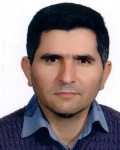| Authors | Hossein Naeemipour,,, |
|---|
| Journal | Animal Science Papers and Reports |
|---|
| Page number | 35-44 |
|---|
| Serial number | 40 |
|---|
| Volume number | 1 |
|---|
| Paper Type | Full Paper |
|---|
| Published At | 2022 |
|---|
| Journal Grade | ISI |
|---|
| Journal Type | Typographic |
|---|
| Journal Country | Iran, Islamic Republic Of |
|---|
| Journal Index | JCR،Scopus |
|---|
Abstract
Present study aims to estimate genetic parameters for traits related to longevity for of Holstein cows in Iran. Five traits were defined to evaluate longevity consisting of number of days from first calving to the end of first lactation or culling (HL1), number of days from first calving to end of second lactation or culling (HL2), number of days from first calving to end of third lactation or culling (HL3), number of days from first calving to the end of the fourth lactation or culling (HL4) and number of days from first calving to the end of the fifth lactation or culling (HL5). Required information was obtained from the data collected by the National Breeding and Improvement of Animal Production Center of Iran, during years 1987-2014. To estimate heritability and breeding values, DMU software was used. Genetic trends were also calculated based on the mean of annual breeding values. Heritability estimates for HL1 to HL5 were 0.018, 0.088, 0.11, 0.085 and 0.05, respectively. The highest breeding value for longevity was predicted in HL2 (+100.18 days) and the lowest value for this trait was predicted in the HL5 (-82.73 days). Genetic trend, based on the annual mean of breeding values for studied traits, increased during first years and decreased afterwards. The obtained genetic trend for HL1 was different from other traits and showed a steady pattern during years of study. According to heritability estimates and genetic trend of traits related to longevity, culling cows in after the first calving and regardless of the future performance of cows in the next calving will result in a population of cows unable to express their actual life span. However, optimal herd life and maintaining the genetic reserves related to this trait will be obtained through keeping cows for longer times in the herd and letting them produce until the fourth or fifth year after the first calving. Then cows could be culled, by taking other important traits such as milk production and disease resistance into account. It will certainly reduce the replacement costs and increase the profit of dairy farms. Therefore, in order to improve longevity, it is suggested that culling at age of fourth or fifth year after the first calving should replace the current culling policy in dairy farms of Iran.
Paper URL
